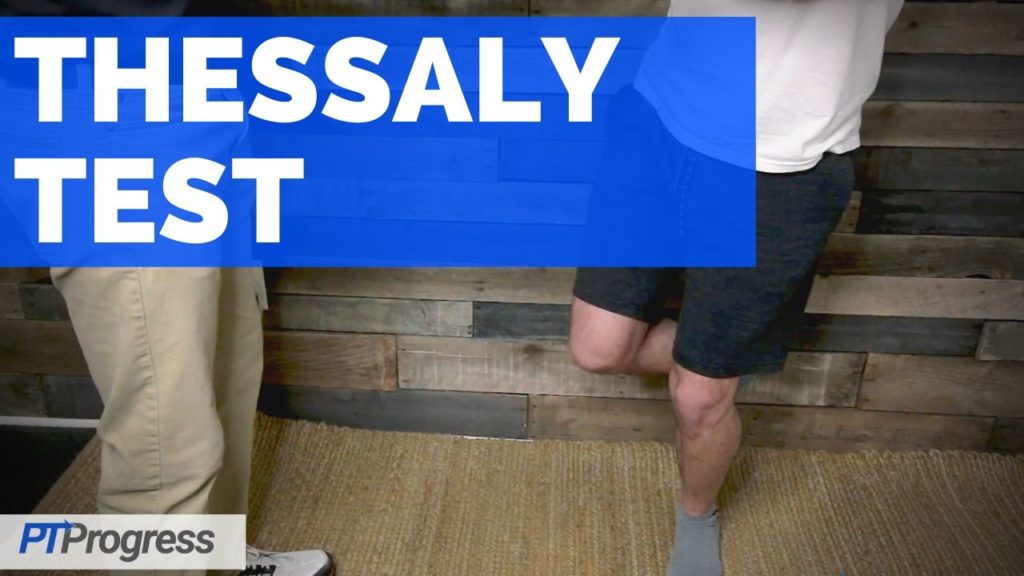
The Thessaly test is used to assess the integrity of the medial and lateral meniscus, specifically testing for meniscal tears.
How to Perform Thessaly Test
Position of Patient: The patient should stand tall on one leg while holding the examiner’s hand for support.
Performance: The examiner instructs the patient to rotate the body and leg internally and externally 3 times with the knee bent at 5 degrees and then at 20 degrees. It’s recommended to first perform the test on the unaffected side so the patient can properly perform movement as a practice run before testing the affected knee.
How to Interpret Thessaly Test
Positive Finding: A positive test occurs when pain or clicking occurs at the joint line. A locking or catching sensation may also suggest a meniscal injury.
Test Accuracy / Reliability / Evidence:
Sensitivity: 0.66
Specificity: 0.,96
+LR: 16.5
-LR: 0.35
Source: Karachalios T, Hantes M, Zibis AH, et al: Diagnostic accuracy of a new clinical test (the Thessaly test) for early detection of meniscal tears. J Bone Joint Surg Am 2005; 87: pp. 955-962
Next Special Test: Apley Compression Test

